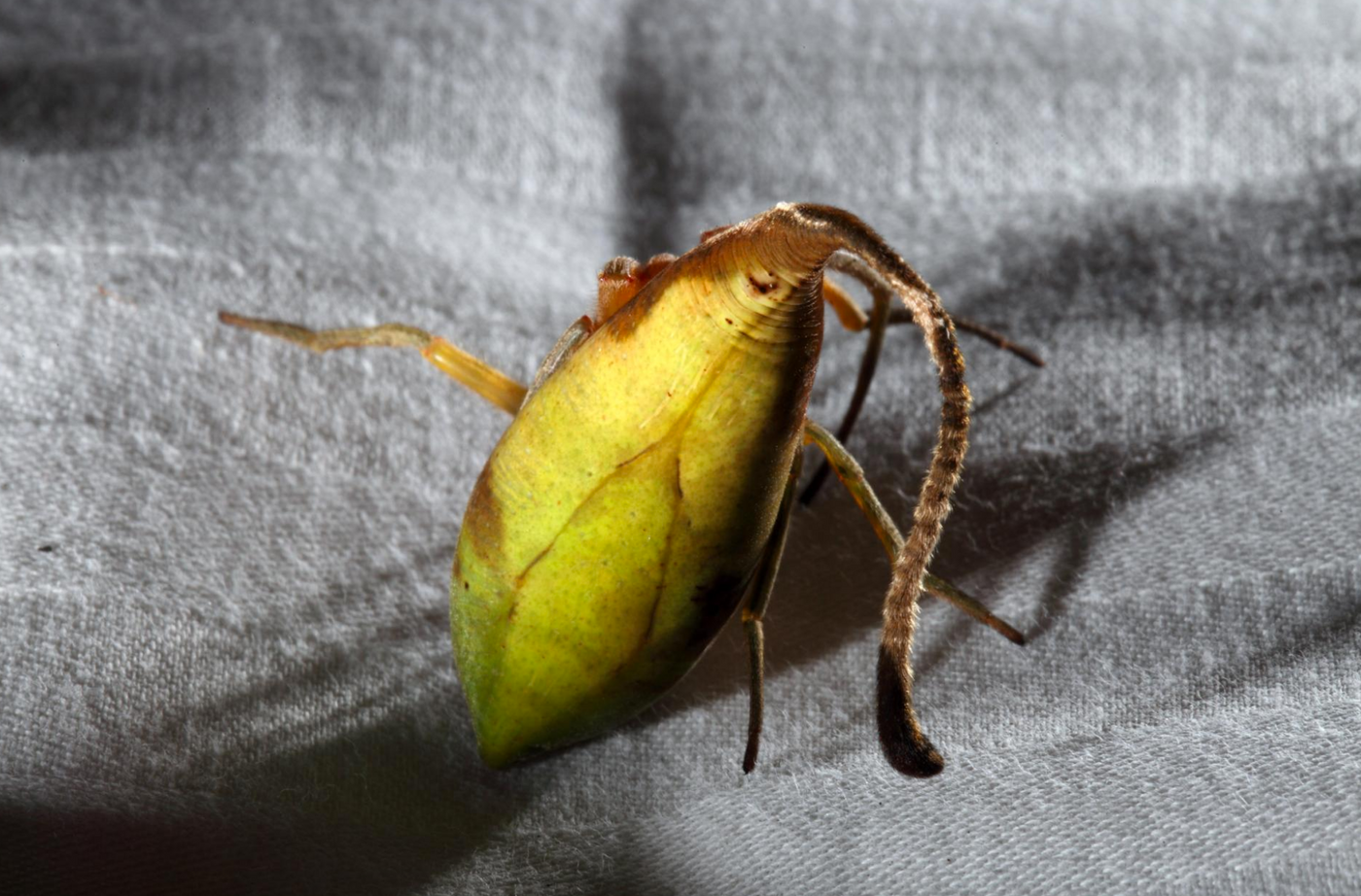This New Spider Species Looks like a Dead Leaf
You’ve probably heard of stick insects, which can disguise themselves in the wild as small sticks or twigs, but how about a spider that can disguise itself as a type of dried up leaf?
The new spider species was discovered in the Yunnan rain forest in China by researcher Matjaz Kuntner and his colleagues. It’s just in time for Fall because at this time of the year, dry leaves are found all over the ground. It gives the spider a great way to camouflage with the rest of its surroundings.

Image Credit: Matjaz Kuntner
The findings have been published in the Journal of Arachnology and the new spider falls under the Poltys genus.
The spider was reportedly discovered while the researcher came across a spider web in the rain forest, only he noticed the strand ended at a leaf on a tree, rather than a hard surface. Closer inspection revealed it was actually a spider, not a leaf at all.
Interestingly, the spider uses its silk to attach dead leaves to tree branches next to itself, which further improves its camouflage abilities.

Image Credit: Matjaz Kuntner
“Camouflage is about fooling the senses. Masquerading is about fooling the brain,” explains John Skelhorn, an entomologist who studies masquerading at the United Kingdom's University of Newcastle-Upon-Tyne. “A masquerade is much more likely to be successful if there are lots of examples of their disguise around them.”
If you’re wondering how a spider like this could have gone unnoticed for so long, well perhaps the answer is in its camouflage technique, which perhaps was so convincing that it even went without human detection, until now.
Two specimens were acquired during the trip, one male and one female, however it’s possible that each of the two specimens are different species from one another in themselves. More genetic testing is required to see how closely the relate to one another and also to other spider groups.
The new species has yet to be given a colloquial name, but it shouldn’t be too long now. Additional research will shed light on whether or not there are other kinds of species in the same genus in the region.
Source: National Geographic









